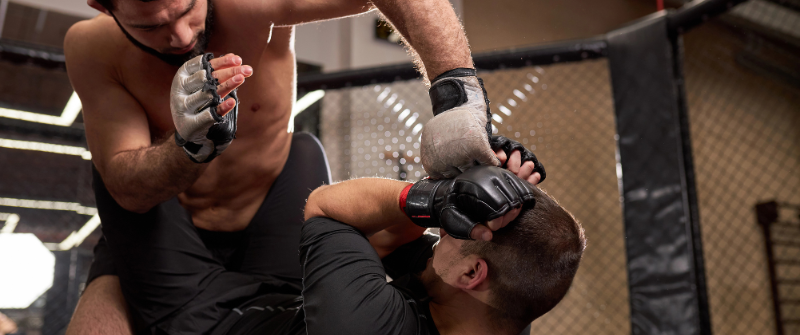
- by Eric Reingen
- February 19, 2023
Consider the following:
When you reopen your gym’s doors in the upcoming days or weeks, you’re taking on a risk. Period.
The virus isn’t gone, nor is it going away in the next few months. Worst case scenario, you have an outbreak at your gym, people become sick or worse, and your reputation gets tarnished.
This isn’t to say we’re suggesting you don’t open. It’s simply to suggest that your efforts should be focused on figuring out when it is reasonably safe to open, and how to mitigate this risk as much as you possibly can.
“You have to lay out the safest experience that you can create, which by the way is not 100 percent safe,” is how OPEX CEO Jim Crowell put it.
With that in mind, When is the right time to open?
“It’s very much an it depends scenario,” said Crowell, who works with gym owners around the world on how to become more profitable (Learn how OPEX teaches fitness business in this free course). It depends on your city, your country, local politics, state politics and, of course, your own gym community.
Thus, step one is to figure out when is right for you.
Step 1: Consider when is best for your gym
While figuring out when is the right time to reopen needs to be done on an individual, case-by-case basis, Crowell said it’s important to first define what a successful reopening will look like for you. And then you should only open when you have reason to believe it will be a net positive for your community, Crowell said.
Another piece of the when puzzle comes down to educating yourself about the real numbers in your area. Being knowledgeable will also help you project safety and confidence to your clients and prospective clients when you do resume in-person services.
“You’ve gotta think about what is really going on in your community. Forget about all the opinion stuff. What are they doing for testing? What are the number of new cases on a daily, weekly, monthly basis? How many people are getting sick, staying sick or passing away?” Crowell said.
“Know what the actual numbers are, understand what phase of reducing the lockdowns you’re in, and make a really quality decision about why you should or shouldn’t be open based upon the safety and the progress of your clients and your business.”
Step 2: Get buy-in from your coaches
While it’s always important to have your coaches on the same page—this is one of the reasons to put your coaches through the same education via the OPEX Coaching Certificate Program (CCP)—having a united front is even more important now at a time when people are apprehensive and nervous.

“You have to get your coaches on the same page. That needs to start now,” Crowell said. “You have to create a buy-in process.”
This involves making sure that you’re hearing your coaches out, making sure that they really are prepared to open up, making sure that they know what the process looks like, and then making sure they understand how to talk to clients and other people in the community.
Crowell added: “You need to create safety and confidence. If you don’t think you should be open, your clients and your community is going to smell it all over you…and people will likely have a negative reaction when you actually open your doors.”
He recommends asking for feedback not just from coaches, but from your entire community, to assess where they’re at and what they’re comfortable with.
If you don’t do that, you might end up creating an environment that “actually induces fear,” Crowell said—the opposite of what you’re trying to do. If you’re too restrictive in your approach, it can actually make people more scared.
Step 3. Create a blueprint for the client process
Surveying your clients is a great place to start developing your client process blueprint. This will allow you to find out what their biggest concerns are, which you can then address when creating your blueprint.
One big fear many have expressed is a fear of touching the same equipment as others, for example.
“So what does the experience look like for getting equipment?”
This needs to be laid out clearly, Crowell explained.
Leave no stone unturned: Consider every step of the way, such as how clients sign in to your facility (assuming you’re no longer using a communal iPad), to how they’re going to open your front door.
“With their elbow?” Crowell asked facetiously.
The overarching point: “Your client experience has to be mapped out to the T,” Crowell said, and must be specific and action-oriented. Finally, coaches, too, must be well versed in how to execute the new processes.
Step 4: Reconsider your brand
When it comes to bringing your current clients back to the gym, and especially when considering acquiring new clients, it’s super important that your branding and imagery reflects an environment that looks clean, safe, and calm.
“When you’re thinking about acquiring new clients…this confidence and safety needs to be a part of your message because that is what people are going to look for. They’re going to look for the most professional, cleanest-looking (facility),” Crowell said.
He added: “(People) don’t want a lot of extra volatility in their lives right now. So when they’re looking for a gym, you need to be the gym that looks absolutely pristine and you need to project that out to the public.”

You also need to consider the images you post online and how it might create or reduce fear.
“If your positioning has been super intense group training, and your images have all been about everybody being close with one another, sweating…you need to think about switching that up a little bit right now,” Crowell said.
“You need to think through what your entire brand looks like to the public. And you need to make sure that that brand is the exact experience they’re going to get inside your facility,” he added.
Step 5: Diligently follow government guidelines
This might be the easiest step, as there are clear legal parameters being put out that provide a framework of rules to follow.
Crowell warns now is not the time to mess with official safety guidelines.
“Be on the same page as your local government,” Crowell said.
It’s not worth the risk. If you go against the government “and you’re found out, that’s a big problem for you,” he said. Worst case scenario: an outbreak at your gym, or your gym getting shut down forever.
Final Two Tips:
1. Keep the online coaching going
Prepare to have waves of opening and closing, depending on how the virus plays out, so don’t abandon what you have been doing remotely.
“You have to maintain that ability to take someone online for a while,” Crowell said.
Learn how to successfully offer remote coaching in this free guide.
2. Be honest
Don’t promise your clients they won’t get COVID-19. But be upfront and honest about exactly what you’re doing to provide the safest possible experience for them.
“That makes people feel safe, because it’s honest,” he said.
Categories
Fill out a short form to contact us with your questions or to receive a customized quote.
Recent Posts
-
 NEXO’s Affinity Program: How Fitness Suppliers and Associations Can Partner for Profit and Protection
December 5, 2025
NEXO’s Affinity Program: How Fitness Suppliers and Associations Can Partner for Profit and Protection
December 5, 2025 -
%20(1).png) How to Insure an MMA Gym Without Paying for Coverage You Don’t Need
December 5, 2025
How to Insure an MMA Gym Without Paying for Coverage You Don’t Need
December 5, 2025 -
 Mastering Liability for Jiu-Jitsu Tournaments and Martial Arts Events
December 5, 2025
Mastering Liability for Jiu-Jitsu Tournaments and Martial Arts Events
December 5, 2025 -
 From Zen to Zoning: What Every Yoga and Pilates Studio Owner Should Know Before Signing a Lease
December 5, 2025
From Zen to Zoning: What Every Yoga and Pilates Studio Owner Should Know Before Signing a Lease
December 5, 2025 -
%20(1).png) Why Your Referral & Loyalty Program Can Impact Your Insurance Rates
December 5, 2025
Why Your Referral & Loyalty Program Can Impact Your Insurance Rates
December 5, 2025
